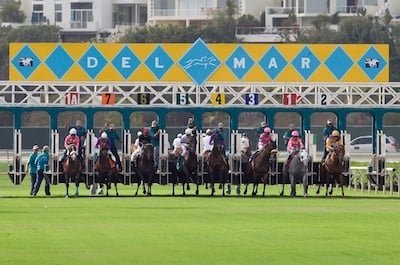INTRODUCTION:

We get this question asked a lot – and deservedly so!
Don’t be intimidated. A claiming race isn’t complicated and easy to learn!
Simply put, if you enter your horse in a claiming race, you are putting your horse up for sale for the stipulated purchase price. In Southern California, there are claiming races with purchase prices as high as $100,000 and as low as $8,000.
The rules for buying a racehorse in a claiming race are different in every circuit but most follow what we will call “The Common Rules”. There are just 3 of them.
Rule 1: Drop the “Claim”
On race day, up until 15 minutes before post time, an owner may “drop in a claim” for a horse in a claiming race. This is nothing more than filling out a 3×5 claim slip and dropping it into the claim box in the racing office. The slip states the horses name, your name/license number and trainer. The owner must have the required funds (plus tax) already in their horsemen account with the track paymaster.
Rule 2: Ownership Changes When Gates Open
When the gates open, ownership of the horse instantly changes to the new owner. If the horse earns a purse in the race it goes to the former owner. Immediately after the race, the new owner’s groom takes the horse to his new barn and the paymaster transfers the sales proceeds to the former owner.
Rule 3: Ties are Broken by Drawing Straws
If more than one owner puts in a claim for the same horse, a “shake” ensues immediately after the race. The “shake” is nothing more than putting numbered balls in a genie bottle and pulling out the winner. There can be a two-way shake or even as many as a fifteen-way shake.
Commonly Asked Questions:
-
What if the horse gets hurt during the race (or, heaven forbid, dies)?
In some jurisdictions (like California) the state vet examines the claimed horse after the race. If the vet determines the horse was injured (or dies) during the race, the vet will void the claim and the paymaster will refund the monies. In such instance, the former owner goes and picks up his old horse. In other jurisdictions, it is caveat emptor (Let the buyer beware!). That is the risk a new owner takes and yes it can be a costly one.
-
Can you inspect the horse before the race?
Other than a visual inspection from any common area of the race track – the answer is NO. You cannot visit the horse, or have a vet perform an exam. This is another instance of caveat emptor.
-
What are the benefits of running in a claiming race?
First and foremost, it is a chance to sell your horse for the stated price. There are only two ways to earn income as a horse owner and both can happen during this race (i.e., win a purse, sell your horse). Second, because of the risk of losing your horse, many of the top quality horses do not run in claiming races – so they are considered “easier” races.
CONCLUSION:
The “claiming game” is a fascinating element to horse racing. It is fast paced with lots of turnover. Owning a racehorse can be the most exciting investment you ever make. Many people ask how to get into horse racing and this is a quick way to find instant action. Horses are bought and sold like stocks and the strategy used is tantamount to poker. Your trainer or trusted management team can walk you through risks and rewards before entering your horse in a claiming race or adding a claimer to your racing stable.
